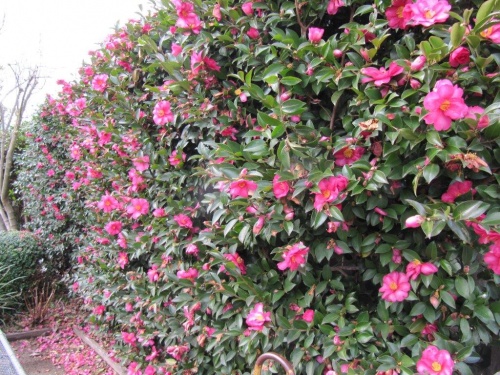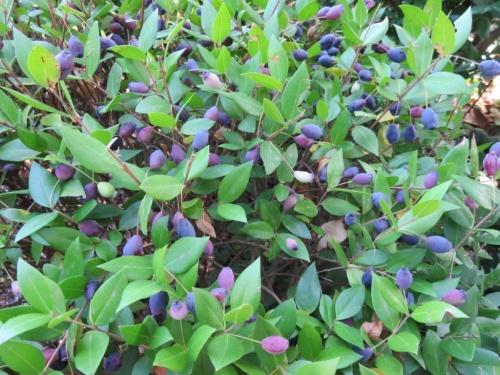
I DON’T know of a more beautiful plant flowering most of the winter than the Camellia sasanqua.

This beautiful shrub is a present full of buds just waiting to burst into bloom. Some varieties, such as the “Paradise Sarah”, just can’t wait until winter.
The first flowers are adorning our garden now. Camellia sasanqua gets its Chinese name Mei camellia on account of it flowering at the same time as Mei (Prunus mume), the flowering apricot.
The much-travelled Dr Peter Valder in his book “The Garden Plants of China” comments that Camellia sasanqua don’t seem to be common in Chinese gardens nowadays, which seems strange given its wide popularity.
It is one of the hardiest of camellias, thriving in all conditions from shade to full sun.
One of the most prominent camellia breeders was the now-retired Bob Cherry, of Paradise Camellias, who travelled frequently to remote parts of China. His range of “Paradise” camellias is still available at most garden centres.
As bird attractors, the honeyeaters would be lost without the nectar of winter-flowering camellias.

THE profusion of plants growing in the Mediterranean region that have been introduced into our gardens is legion. And here’s an interesting one: the Myrtus communis (or myrtle). We have it in our garden and it is heavy with purple berries, so loved by the magpies.
This rather special and yet common plant comes from Sardinia, where the national drink is a purple-red liqueur called mirto. Served chilled and made from the berries and leaves of the myrtle bush, mirto is still recognised not only as an after-dinner drink but for its digestive properties. Myrtle dates back to the ancient Greeks, who grew it for its restorative and medicinal properties.
So that common Myrtus communis in the garden is not so common after all. It is readily available from garden centres.
WITH a long, hot summer combined with large areas of Canberra under construction, dust continues to be a problem that can affect indoor and outdoor plants.
Layers of dust on leaves can cause problems with plants’ breathing. With little or no rain to wash the dust off, it’s up to us to give plants a fine spray fairly frequently. For indoor plants, simply wipe down with a damp sponge.
It’s a similar problem for birds and that’s why a bird bath is so important. As I write, looking out of the window there is a currawong having a good wash, followed immediately by top-knot pigeons and then parrots all in quick succession. This means filling the bird bath more than once a day.
Jottings…
- All spring bulbs should now be planted, but it’s still not too late to dig up and divide bulbs. Particularly Scilla peruviana, which after a couple of seasons grow in a big clump. But it needs to be done now.
- Give all plants, especially perennials, one last feed before winter. Liquid feeding is the best, soaking immediately down to the roots, rather than pelletised food. My usual certified organic recommendations include Neutrog Seamungus, Maxicrop Seaweed Plant Nutrient or Eco-Seaweed.
- Camellia sasanqua makes an excellent, dense, evergreen hedge growing easily to three metres. Plant in a trench one to one and a half metres apart.
- John Bradshaw will talk about “Rocks, Climate Change and Trees – a review of an eclectic career a then and now perspective” at the Horticultural Society’s next meeting at Wesley Church Centre, National Circuit, Forrest, 7.30pm, on Monday, May 21. No charge, all welcome followed by supper.
Who can be trusted?
In a world of spin and confusion, there’s never been a more important time to support independent journalism in Canberra.
If you trust our work online and want to enforce the power of independent voices, I invite you to make a small contribution.
Every dollar of support is invested back into our journalism to help keep citynews.com.au strong and free.
Thank you,
Ian Meikle, editor




Leave a Reply